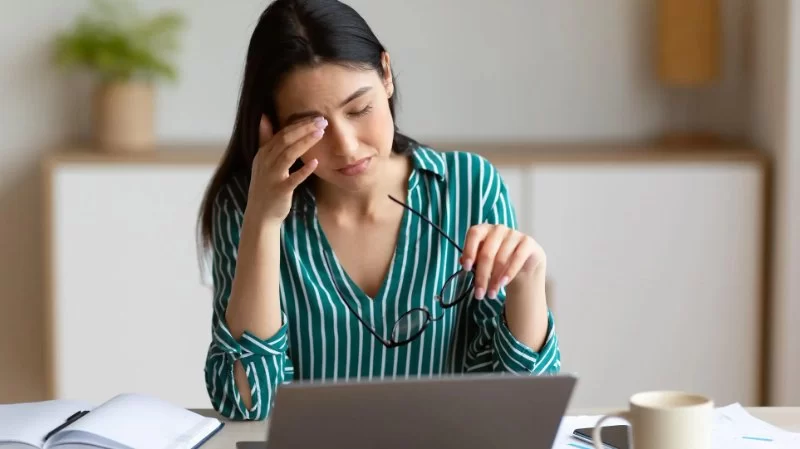
How to Prevent Eye Strain in Librarians: Effective Tips for Comfort
Librarians spend long hours reading, working with computers, and helping visitors—tasks that can put significant strain on their eyes. Eye strain is a common issue for professionals in library settings due to extended screen time and close-up reading. If you're a librarian or spend time in similar work environments, learning how to prevent eye strain is crucial to your overall well-being. In this article, we’ll explore effective strategies to reduce eye discomfort, enhance eye health, and maintain long-term comfort while working in a library.
1. Understanding Eye Strain and Its Causes in Librarians
Eye strain, also known as asthenopia, occurs when the eyes become fatigued due to prolonged use. For librarians, the primary causes of eye strain include excessive screen time, long hours of close reading, and insufficient lighting. Understanding the factors that contribute to eye strain is the first step in preventing it.
1.1 The Role of Screen Time
Most librarians spend a significant portion of their day working on computers, either assisting patrons, cataloging books, or managing library databases. The blue light emitted by screens can cause digital eye strain, which results in symptoms such as headaches, dry eyes, blurred vision, and neck pain. Extended exposure to screens without proper breaks can make these symptoms worse.
1.2 The Impact of Close-Up Reading
Librarians also spend a lot of time reading physical books or documents. Close-up reading for long periods forces the eyes to focus on small text, which can lead to eye fatigue. Holding books or papers at improper distances can exacerbate this problem, making the eyes work harder to focus.
1.3 Poor Lighting Conditions
Insufficient or harsh lighting in the library can worsen eye strain. Poor lighting leads to squinting or overexerting the eye muscles to compensate for inadequate illumination. Librarians who work in dimly lit spaces or under glaring fluorescent lights are more likely to experience discomfort and fatigue.
2. How to Prevent Eye Strain in Librarians
Now that we understand the causes of eye strain, let’s dive into effective strategies to prevent and manage it. With some simple changes to habits and work environments, librarians can significantly reduce the impact of eye strain.
2.1 The 20-20-20 Rule
One of the most effective ways to reduce eye strain is by following the 20-20-20 rule. Every 20 minutes, take a 20-second break and look at something 20 feet away. This simple practice allows your eyes to refocus and relax, reducing the risk of fatigue from staring at a screen or reading for extended periods.
2.2 Adjusting Your Workspace
Optimizing your workspace can significantly reduce eye strain. Here are a few adjustments to consider:
- - Position your computer screen about an arm's length away and adjust it so the top of the screen is at or just below eye level.
- - Ensure your workspace is well-lit, with natural light if possible, and avoid glare from windows or overhead lights.
- - Use task lighting, such as desk lamps, to brighten your work area without straining your eyes.
By making these small adjustments, you can create an environment that minimizes eye strain and promotes long-term eye health.
2.3 Regular Eye Exercises
Incorporating eye exercises into your daily routine can help strengthen the eye muscles and reduce fatigue. Some effective exercises include:
- - Palming: Rub your hands together to generate warmth and gently cup your palms over your closed eyes. Hold for a few seconds to relax your eyes.
- - Eye rotations: Slowly rotate your eyes in circles, first clockwise and then counterclockwise, to relieve tension.
- - Focus shifts: Hold your finger or a pen in front of you and focus on it for a few seconds. Then, shift your focus to something in the distance and hold for a few seconds. Repeat this a few times.
These exercises can help improve eye flexibility and relieve strain caused by close-up work.
2.4 Proper Ergonomics for Reading and Working
For librarians who spend significant time reading physical books or documents, maintaining proper posture and ergonomics is essential. Consider the following tips:
- - Keep reading materials at eye level to avoid unnecessary strain on your neck and eyes.
- - Use adjustable bookstands or desk supports to hold materials at the correct distance and angle.
- - Take regular breaks to stretch and give your eyes a chance to rest.
Proper ergonomics not only reduces eye strain but also prevents neck and back pain, improving overall comfort during long hours of work.
2.5 Eye Protection: Glasses and Screen Filters
If you frequently work on computers, investing in blue light blocking glasses can be an excellent way to protect your eyes from the harmful effects of screen exposure. These glasses are designed to filter out blue light, which can reduce digital eye strain and improve sleep quality.
Additionally, consider using screen filters or protective covers for your devices. These filters reduce glare and minimize eye strain caused by excessive screen brightness. This simple addition can make a significant difference in your comfort level.
3. Case Study: How One Librarian Prevented Eye Strain
Jane, a librarian at a busy public library, found herself suffering from frequent headaches and dry eyes after long shifts at her computer. After consulting with an eye care specialist, she implemented several changes to her work environment, including better task lighting, taking frequent breaks, and incorporating the 20-20-20 rule into her routine. She also invested in blue light blocking glasses. Over time, Jane noticed a significant reduction in her symptoms, allowing her to continue her work without the discomfort she once experienced.
4. Conclusion: Take Care of Your Eyes for a Healthier Work Life
Preventing eye strain is essential for librarians and anyone who spends long hours reading or working on computers. By following simple tips such as taking breaks, adjusting your workspace, incorporating eye exercises, and using the right protective equipment, you can significantly reduce eye discomfort and maintain long-term eye health. For more expert advice and eye care solutions, visit Eye Docs for the best products and services to help you protect your eyes and stay comfortable at work.








